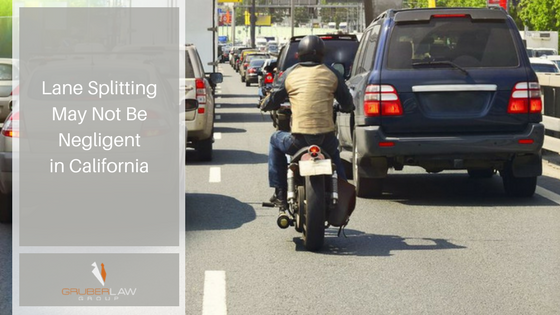 If you’ve been in a motorcycle accident with a car, you may be hit with a contributory negligence claim when you pursue your personal injury suit. This often results from the idea that you were lane splitting and thus creating unnecessary danger. Because of this, you may be facing a reduction in your settlement.
If you’ve been in a motorcycle accident with a car, you may be hit with a contributory negligence claim when you pursue your personal injury suit. This often results from the idea that you were lane splitting and thus creating unnecessary danger. Because of this, you may be facing a reduction in your settlement.
The reason this happens is that there are many negative stereotypes surrounding motorcyclists, and insurance companies are eager to exploit them in order to avoid paying out. There’s a key factor that’s all too often overlooked in such cases, however: in California, lane splitting is not illegal, which means that you can’t be inherently considered negligent for doing it. Read about lane splitting in California, how it doesn’t automatically mark you as negligent and how your injury lawyer can help you get a settlement for your injuries.
Lane Splitting in California
When a bicycle or motorcycle travels between rows or lanes of stopped or slow-moving vehicles, this is lane splitting. There are two reasons why cyclists do this. The first is convenience; they can fit through and it speeds them up. In addition, however, lane splitting is actually safer. When you’re between vehicles you’re less likely to get hit and, when you’re on the lines, you’re not riding in a blind spot.
The important key factor when it comes to lane splitting is that, due to a law that went into effect on January 1, 2017, it is perfectly legal to engage in this process in the state of California. Officially, lane splitting in California is defined as when someone drives a motorcycle with both wheels on the ground between rows of vehicles that are in the same lane, on an undivided or divided highway, road or street.
Highway Patrol Guidelines
There are general guidelines in place for the California Highway Patrol to use to regulate lane splitting. These guidelines are allowed under the law. In general, motorcyclists may not travel more than 10 mph above the speed of other vehicles in traffic, should never lane split if traffic is moving at least 30 mph and should restrict themselves to the farthest left lanes on multilane roads.
Motorcyclists should also carefully consider the safety of the act, including how wide the lanes are, the size of other cars and trucks, lighting and weather conditions. Finally, they should always be alert and on the defensive.
Lane Splitting and Personal Injuries
Before these guidelines went into effect, it was easy to claim lane splitting as part of contributory negligence in accident cases. Now, the defendant must also be able to prove that the motorcyclist violated the guidelines for lane splitting. If the cyclist was engaging in lane splitting but was within the guidelines set by the Highway Patrol, they are not going to be automatically considered negligent.
Call a Personal Injury Attorney
If you were injured while lane splitting, even within set guidelines, it’s vital that you work with a personal injury attorney. The right attorney knows how to defend your right to lane splitting in California, and can get you the compensation you deserve. For a free consultation, call the Gruber Law Group today!









Leave a Reply